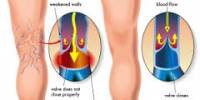Researchers from Johns Hopkins Medicine have concluded that the rate of lawnmower injuries continues to be close to 6,400 per year, with the majority requiring surgery and hospitalization and costing an average of $37,000 per patient. They describe their analysis of national data as being unusually thorough.
In the September issue of Public Health Reports, a report on the study that tracked eight years of data between 2006 and 2013 was published.
“Despite consumer education programs and warning labels, lawnmower injuries in the United States remain a serious public health concern,” says Deborah Schwengel, M.D., assistant professor of anesthesiology and critical care medicine at the Johns Hopkins University School of Medicine and the study’s senior author. She is also associated with Johns Hopkins Children’s Center.
Overall, the new analysis revealed that men sustained the majority of injuries (43,567 of 51,151, or 85.2%) and that children under the age of four were six times more likely to sustain foot/toe or lower extremity injuries than those aged 15 and up, as well as being 1.7 times more likely to have an amputation.
On the other side, injuries to the hand or upper extremity were 8.3 times more common in older teens and adults (age 15 and above). This suggests, according to the researchers, that young children are more likely to be hurt when they run into the yard while a family member uses the lawnmower or when they get their foot caught in the device while sitting on the operating member’s lap, and that most teens and adults get hurt when they stick their hands into the mower to clear debris.
The data were unable to provide the researchers with information regarding the particular type of mower that resulted in an individual injury, the mower designs that were most frequently linked to injuries, or whether the injured people were bystanders or actually cutting the grass.
Understanding what types of injuries occur in certain groups should help engineers design safer lawnmowers and policymakers create more appropriate prevention policies.
Deborah Schwengel
According to Schwengel, previous research typically only gathered information on a limited number of injuries caused by consumer products without taking into account matters of cost or geographic extent.
Schwengel and her team used data from the Nationwide Emergency Department Sample (NEDS), the biggest emergency department database in the United States, to better grasp the scope of the issue. Overall, they concentrated on medical record reports of emergency room visits and hospitalizations involving lawnmowers from January 1, 2006, to December 31, 2013.
Twenty percent of all emergency department visits in the United States, or 25 million to 30 million visits per year, are recorded by NEDS. Along with the day of the week and month of each visit, the researchers also gathered data on the wounded individuals’ ages, places of residence, genders, and other characteristics.
For the investigation, the research team found 14,878 lawnmower injuries during an eight-year span. When these injuries were adjusted to reflect national ER visit statistics, the number of injuries was estimated to be 51,151, with an average of roughly 6,394 instances per year.
Lacerations, fractures, and amputations made up the majority of the injuries for the overall study group (23,907 of 51,151, or 46.7%), respectively (11,013 or 21.5 percent). The wrist or hand (33,477, or 65.4 percent) and foot or toe were the most frequently injured body parts (10,122 or 19.8 percent).
43,567 (85.2%) of the 51,151 instances involved men; 19,162 (37.5%) occurred in the South; 33,886 (66.3%) occurred on a weekday; and the majority, 36,686 (81.7%), occurred between April and September.
The researchers used standardized injury codes, or E-codes, to look at national averages of treatment costs for the codes and found that average emergency room expenses per patient were $2,482 and average inpatient rates per patient were $36,987.
The study was restricted to E-codes, which hospitals typically utilize for administrative purposes, and Schwengel and her colleagues point out that state-by-state variations exist in the collecting and reporting of these codes.
The NEDS data sample, however, allows for more in-depth analysis of charges, operations performed, and patient demographics for these types of injuries, according to the authors, who also claim that the results are equivalent in outcome to those of prior research.
“Understanding what types of injuries occur in certain groups should help engineers design safer lawnmowers and policymakers create more appropriate prevention policies,” says Schwengel.
The researchers suggest that a lawnmower with stopping mechanisms that automatically activate when human flesh is recognized close to the blades might be a superior design that could reduce injuries.
Other authors on this paper were Daniel G. Hottinger, Isam Nasr, Joseph K. Canner and Rahul Koka of Johns Hopkins and Deepa Kattail of McMaster Children’s Hospital.















